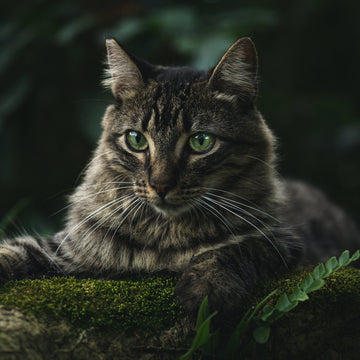Cats are inherently wild creatures, and despite domestication, they still possess natural instincts and behaviors that need to be nurtured. To ensure that your furry friends maintain their wildness even in the comfort of your home, one effective solution is to place a cat tree in your home.
Understanding Your Cat's Wild Nature:
Cats are born hunters and explorers. They have a strong need for mental and physical stimulation, and this desire to climb, scratch, and observe their environment is deeply ingrained in their DNA. When these natural instincts are not fulfilled, cats may become bored, anxious, or even destructive in the home. Providing them with an outlet for these instincts is crucial for their well-being.A cat tree is a multi-tiered structure that often includes platforms, perches, hideaways, and scratching posts. Here's how a cat tree can help maintain your cat's wildness:
Climbing and Perching: Cats love to be up high. In the wild, they would seek elevated spots to observe their surroundings and stalk prey. A cat tree offers various levels for your cat to climb and perch, satisfying their desire to be up high, while also giving them a sense of security.
Scratching: Cats have a natural instinct to scratch to sharpen their claws, mark their territory, and stretch their muscles. A cat tree typically includes scratching posts covered with sisal or other suitable materials. This allows your cat to engage in this essential behavior without damaging your furniture.
Hideaways: Cats appreciate cozy, enclosed spaces for napping and feeling secure. Many cat trees come with hideaways or cubbies where your cat can retreat to relax or play, mimicking the experience of a den in the wild.
Exercise: Climbing, jumping, and playing on a cat tree provide your cat with an opportunity for physical exercise. This is crucial for maintaining their agility, flexibility, and overall health.
Mental Stimulation: A cat tree adds an element of complexity to your cat's environment. They can navigate between platforms, jump from level to level, and explore various nooks and crannies. This mental stimulation is vital for keeping your cat engaged and satisfied.
When choosing a cat tree, consider the size and activity level of your cat. Larger and more active cats may benefit from taller and more complex structures, while smaller or older cats might prefer a simpler design. It's important to ensure that the cat tree is sturdy and stable to prevent accidents.
Tips for Encouraging Your Cat to Use the Cat Tree:
Placement: Put the cat tree in a location where your cat spends a lot of time. Cats love to be where the action is, so consider placing it in a living room or near a sunny window.
Catnip: Sprinkle a bit of catnip on the cat tree to entice your cat to investigate and use it.
Playtime: Use interactive toys to play with your cat on and around the cat tree. This can create positive associations and make the cat tree more appealing.
Positive Reinforcement: Praise and reward your cat when they use the cat tree. Cats respond well to positive reinforcement.
A cat tree is a fantastic addition to your home, not only for the well-being of your cat but also for maintaining their wild instincts. It provides opportunities for climbing, scratching, hiding, exercising, and mental stimulation, all of which are vital for a happy and healthy feline companion. By investing in a cat tree and ensuring it becomes an integral part of your cat's environment, you can help keep their wildness alive even within the confines of your home. Your cat will thank you for it with increased happiness and contentment.
News
How to Keep Your Cat's Wildness Even at Home?

